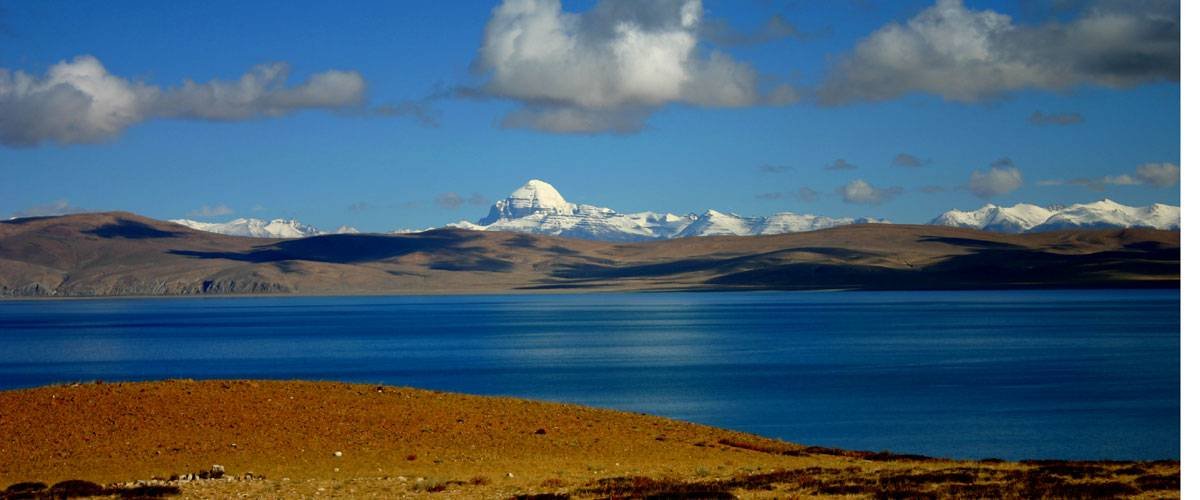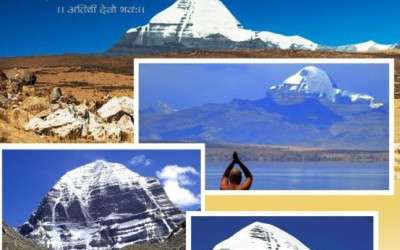- Registered Company
- More than Decade of Experience
- Customer Satisfaction is our motto
Trip Facts
-
Group Size1- 15 pax
-
Max Elevation5600 meters Dolma La Pass
-
GradeModerate
-
TransportationJeep and Car
-
AccommodationHotel/ Lodge/ Guesthouse
-
Cost$2600
-
Trip Length13 Days
-
Best MonthSpring and Autumn
-
WIFIAvailable
-
Trip ModeTravel and trek
-
MealAll Meals on Trek
-
Trekking StyleNormal
-
Start FromKathmandu
-
End PointKathmandu
Outline Itinerary
Day 01: Arrival in Kathmandu
Day 02: Preparation Day in Kathmandu and Pashupatinath (1,400 m)
Day 03: Drive from Kathmandu to Kerung Border (2,700 m)
Day 04: Kyirong Acclimatization Day (2,700 m)
Day 05: Drive from Kyirong to Dongba/Saga (4,450 m)
Day 06: Drive from Dongba/Saga to Lake Manasarovar (4,590 m)
Day 07: Drive from Lake Manasarovar to Darchen (4,575 m)
Day 08: Darchen to Dirapuk Trek (4,910 m)
Day 09: Dirapuk to Zuthulpuk via Dolma La Pass (5,600 m)
Day 10: Trek from Zuthulpuk to Darchen and by car to Dongba/Saga (4,450 m)
Day 11: Drive from Dongba/Saga to Kerung (2,700 m)
Day 12: Drive from Kerung to Kathmandu (1,400 m)
Day 13: Departure from Kathmandu
Altitude Map
This Altitude Map shows highest alttitude you will trek to each day.
Trip Overview
The 13-day Kailash Mansarovar Tour is a pilgrimage to one of the planet's most holy and breathtaking sites. Mount Kailash with Lake Mansarovar in Tibet is sacred to Hindus, Buddhists, Jains, and Bon deceased.
Therefore, it is a place of pilgrimage for those who desire to experience and express spiritual desire, aesthetic enjoyment of nature, and probing culture.
This thoroughly organized tour is an excellent combination of the wild and serene. Tourists from Europe, Singapore, and Malaysia can enjoy a special trip through the beautiful scenery of Nepal and Tibet.
You'll encounter stunning mountain views, peaceful monasteries, and vibrant Tibetan culture at every turn.
Kailash Mansarovar Tour highlight is the circumambulation (Kora) of Mount Kailash, a sacred ritual believed to bring spiritual blessings. You will also experience a glacial blue Lake Mansarovar, exquisitely bordered by snow-capped mountains, to acquire practice or simulate the peace and tranquillity of the country.
Whether looking for a spiritual awakening, an escape into nature, or a chance to explore the majestic Himalayas, the Kailash Mansarovar Tour promises an unforgettable experience. The 13-day journey is adequate for both the explorer and the contemplative, ensuring comfort, safety, and enough time for acclimatization.
Tour Facts: 13 Days Kailash Mansarovar Tour
- Tour Duration: 13 days
- Starting Point: Kathmandu, Nepal
- Destinations Covered: Kathmandu, Kerung, Kyirong, Dongba/Saga (Dolsa), Lake Mansarovar, Mount Kailash, Darchen, Dirapuk, Zuthulpuk.
- Maximum Altitude: 5,600 meters (Dolma La Pass)
- Accommodation: Hotels, guesthouses, and camps
- Activities: Spiritualism, Kora (circumambulation) around Mount Kailash, sightseeing, cultural visiting.
- Main Highlights: Mount Kailash Kora, Lake Mansarovar, Dolma La Pass, Tibetan plateau views.
- Best For: European Singaporeans and Malaysians interested in spiritual, cultural, and nature-related experiences.
- Travel Mode: Road trip and trekking
- Fitness Level: Moderate physical fitness required
- Best Season: May to September
- Religious Significance: Sacred to Hindus, Buddhists, Jains, and Bon followers
Highlights of 13 Days Kailash Mansarovar Tour from Europe, Singapore, and Malaysia
- Kailash Parikrama: A 13-day tour of Mount Kailash that provides a closer look at all four aspects of the mountain and has a religious feel.
- Sacred Lake Mansarovar: Take a bath in the sacred Mansarovar Lake, which Hindu Buddhists and many people in the region revere.
- Dramatic Tibetan Landscapes: See the high-altitude roof of the world, mountain ranges, the plains of Tibet and the beautiful Kailash Mansarovar Lake.
- Dolma La Pass: Get to the trek's highest point at Dolma La Pass (5,600 meters) and have a bird’s eye view of the whole tour.
- Cultural Immersion: Encounter real Tibetan life through visits to monasteries and typical villages and ritual participation.
- Brahmaputra River: Be able to view the Brahmaputra River during your travel, enhancing the natural scenery.
- Prayer Flags and Mani Walls: Explore the sacred culture by observing prayer flags and mani walls surrounding the area.
- Reflection Opportunities: Spend time in solitude around the calm waters of Lake Mansarovar to deepen your spiritual journey.
- Local Cuisine: Tibetan and Indian food will be available at most eating places to enable the clients to experience local cuisine.
- Acclimatization Stops: Use acclimatization days in areas such as Kerung to highlight the importance of high-altitude trekking.
- Pilgrimage Significance: Learn about its importance as a Hindu, Buddhist, Jain and Bon site and a place of pilgrimage.
- Stargazing Opportunities: You can spend a night in the country to have a clear view of stars and other constellations.
- Challenging Terrain: Weather through various terrains that challenge your high endurance while at the same time giving you a vantage to view the world.
- Spiritual Growth: Both processes should include self-reflection and at least practising spirituality during the journey.
Detail Itinerary
Arrival in Kathmandu
Upon arrival at Tribhuvan International Airport in Kathmandu, our team will greet you and assist you with the transfer to your hotel. Go for a chill and get comfortable upon arrival.
In the evening, a brief gathering will inform everyone about the trip, such as safety rules and other necessary preparations. Dinner will be provided at the hotel or a local diner.
Breakfast, Lunch and Dinner
Hotel in Kathmandu
1400m
Preparation Day in Kathmandu and Pashupatinath (1,400 m)
After breakfast, start the day at the Pashupatinath Temple, a UNESCO World Heritage Site. It is one of the holiest Hindu temples dedicated to Lord Shiva. Join the morning routine and experience the spiritual ambience.
Return to your hotel for lunch. Spend the afternoon preparing for the trip—finalizing paperwork, collecting travel permits, and ensuring all equipment is in order. In the evening, take some leisure time to visit Thamel, the bustling tourist town in Kathmandu.
Breakfast, Lunch and Dinner
Hotel in Kathmandu
1400m
Drive from Kathmandu to Kerung Border (2,700 m)
After an early breakfast, depart Kathmandu by road. The journey lasts 7-8 hours and features beautiful sights of evergreen hills, rivers, and delicate miniature villages. As part of the trip, take a short break in between to get something to eat and admire the beauty of the mountains.
Continue to the Nepal-Tibet border at Kerung. Full immigration papers for Nepalese and Chinese citizens are available at both locations. Go into Tibet, stay in a guesthouse for a night, and eat out.
Breakfast, Lunch and Dinner
Lodge/Hotel
2700m
Kyirong Acclimatization Day (2,700 m)
Acclimatization is essential for adjusting to the higher altitude. Lie down in Kyirong for a full day to let your body acclimate. Then, take a short stroll in the nearby hills or browse the village to experience Tibetan culture.
This quiet community, located at the foot of emerald-green mountains, offers a fresh-air climate. Stay hydrated and avoid overexertion. Your guide will advise on managing high-altitude situations. Return to your guesthouse for dinner and rest.
Breakfast, Lunch and Dinner
Lodge/Hotel
2702m
Drive from Kyirong to Dongba/Saga (4,450 m)
Depending on the route, get breakfast before a long-distance drive to Dongba or Saga. The trip will take approximately 6-7 hours along scenic areas: barren plateaus, snow-crowned peaks, and small Tibetan villages.
En route, stop for lunch at a local eatery. Saga is a bustling town which serves as a staging post for pilgrims to Kailash. Rest at your guesthouse, eat dinner and settle in for the night.
Breakfast, Lunch and Dinner
Lodge/Hotel
4450m
Drive from Dongba/Saga to Lake Manasarovar (4,590 m)
After breakfast, continue your drive towards Lake Manasarovar. This part of the journey takes approximately 6-7 hours. While there, take in spectacular panoramas of the Tibetan Plateau and the high Himalayas.
When you arrive at Lake Manasarovar, standing in front of the magnificent turquoise lake with Mount Kailash looming behind you is pretty breathtaking. Upon arrival, there is a parikrama (circumambulation) of the lake, which is holy for Hindus and Buddhists. Check in to your guesthouse or camp by the lake for tonight.
Breakfast, Lunch and Dinner
Lodge/Hotel
4590m
Drive from Lake Manasarovar to Darchen (4,575 m)
In the morning, pray or meditate on the shores of Lake Manasarovar. Following breakfast, drive to Darchen, a small town that is the starting point for the Mount Kailash Kora (circumambulation).
The drive takes about two hours. The rest of the day is spent preparing for the trek, testing gear, and relaxing. Darchen borders rugged peaks and is entirely free of obstruction in its panorama of Mount Kailash.
Breakfast, Lunch and Dinner
Lodge/Hotel
4575m
Darchen to Dirapuk Trek (4,910 m)
Begin your Kailash trek from Darchen after breakfast. On day 1 of Kora, participants walk a 12 km trail to Dirapuk. The trail is relatively moderate in difficulty, with steep ups and downs. During the process, Mount Kailash and its surroundings will provide spectacular views.
The tranquil atmosphere of Dirapuk, featuring the monastery and camping site, offers clear sightlines of the north face of Mount Kailash. Dinner and overnight accommodation are in a local guesthouse or a tent.
Breakfast, Lunch and Dinner
Lodge/Hotel
4910m
Dirapuk to Zuthulpuk via Dolma La Pass (5,600 m)
It is the scariest and most fulfilling day of the trek. Start early in the morning to ascend Dolma La Pass, the high point of the trek. The incline is fairly steep, and the vista from the pass is beautiful.
While walking, stop at Gauri Kund, a holy lake thought to have been the anointing site of Goddess Parvati. After crossing the pass, descend toward Zuthulpuk. The trail is 22 km and 8-10 hours long. Stay overnight at a guesthouse or camp in Zuthulpuk.
Breakfast, Lunch and Dinner
Lodge/Hotel
5600m
Trek from Zuthulpuk to Darchen and by car to Dongba/Saga (4,450 m)
The final step of the trail is a 3-hour hike to Darchen. On arrival, they choose their vehicle modality from Dongba or Saga. The drive takes 6-7 hours. On the way, they enjoy the scenic beauty of Tibet. They check into their guesthouse, eat dinner, and sleep.
Breakfast, Lunch and Dinner
Lodge/Hotel
4450m
Drive from Dongba/Saga to Kerung (2,700 m)
After breakfast, start your journey back to Kerung. The Kailash Trek is long but offers breathtaking views of the Tibetan landscape.
Take a lunch break along the way and take rest points to stretch and unwind. On arrival at Kerung, an overnight stay in a guesthouse with an evening meal is organized.
Breakfast, Lunch and Dinner
Lodge/Hotel
2700m
Drive from Kerung to Kathmandu (1,400 m)
You will cross the border back into Nepal and travel from Kerung to Kathmandu by car. The drive takes about 7-8 hours. Upon arrival in Kathmandu, check into your hotel. Spend the evening leisurely or shopping in Thamel.
Breakfast, Lunch and Dinner
Hotel in Kathmandu
1400m
Departure from Kathmandu
It's time to say goodbye. Follow the breakfast and go straight to Tribhuvan International Airport for your flight. Bring back fond memories of your trip to Kailash Mansarovar.























